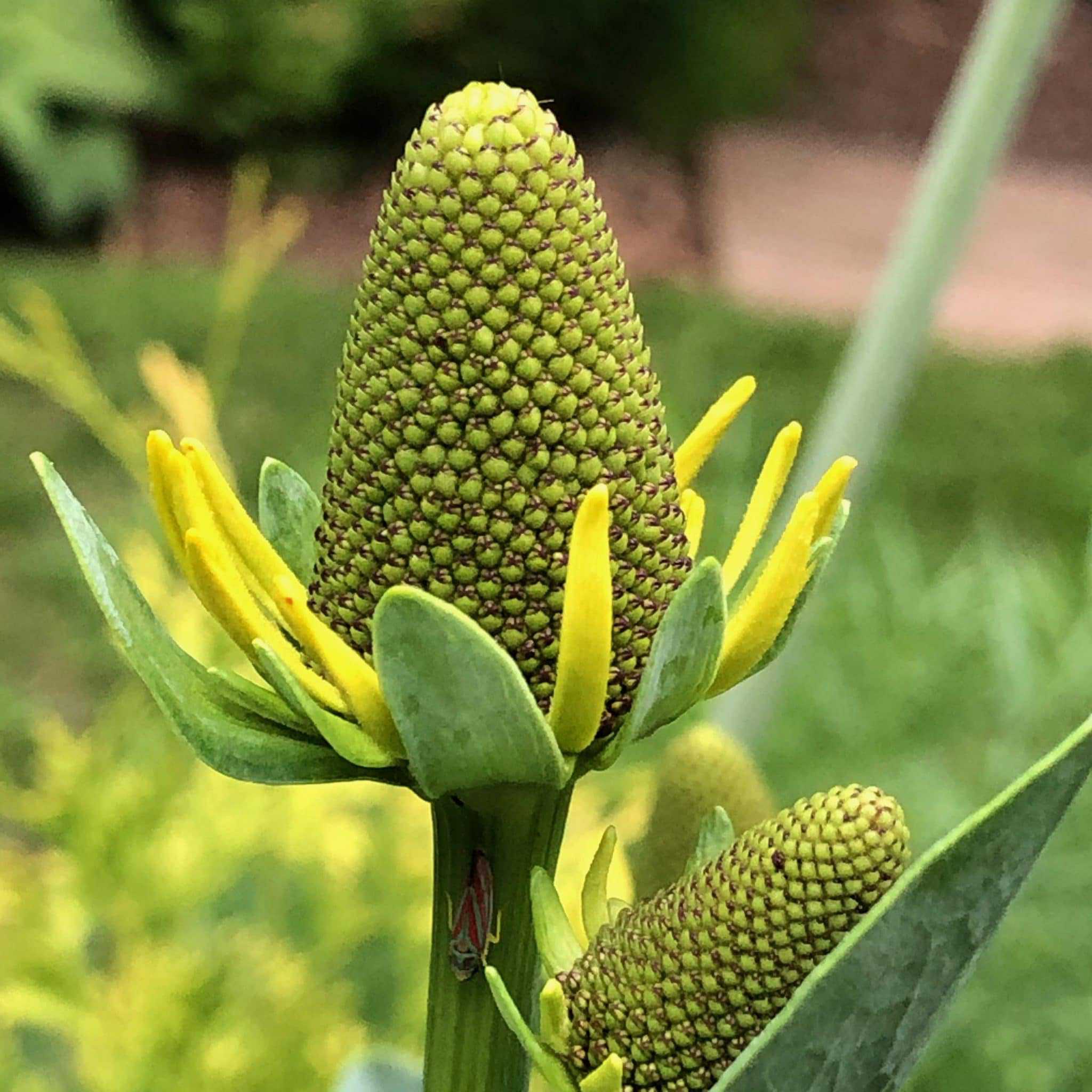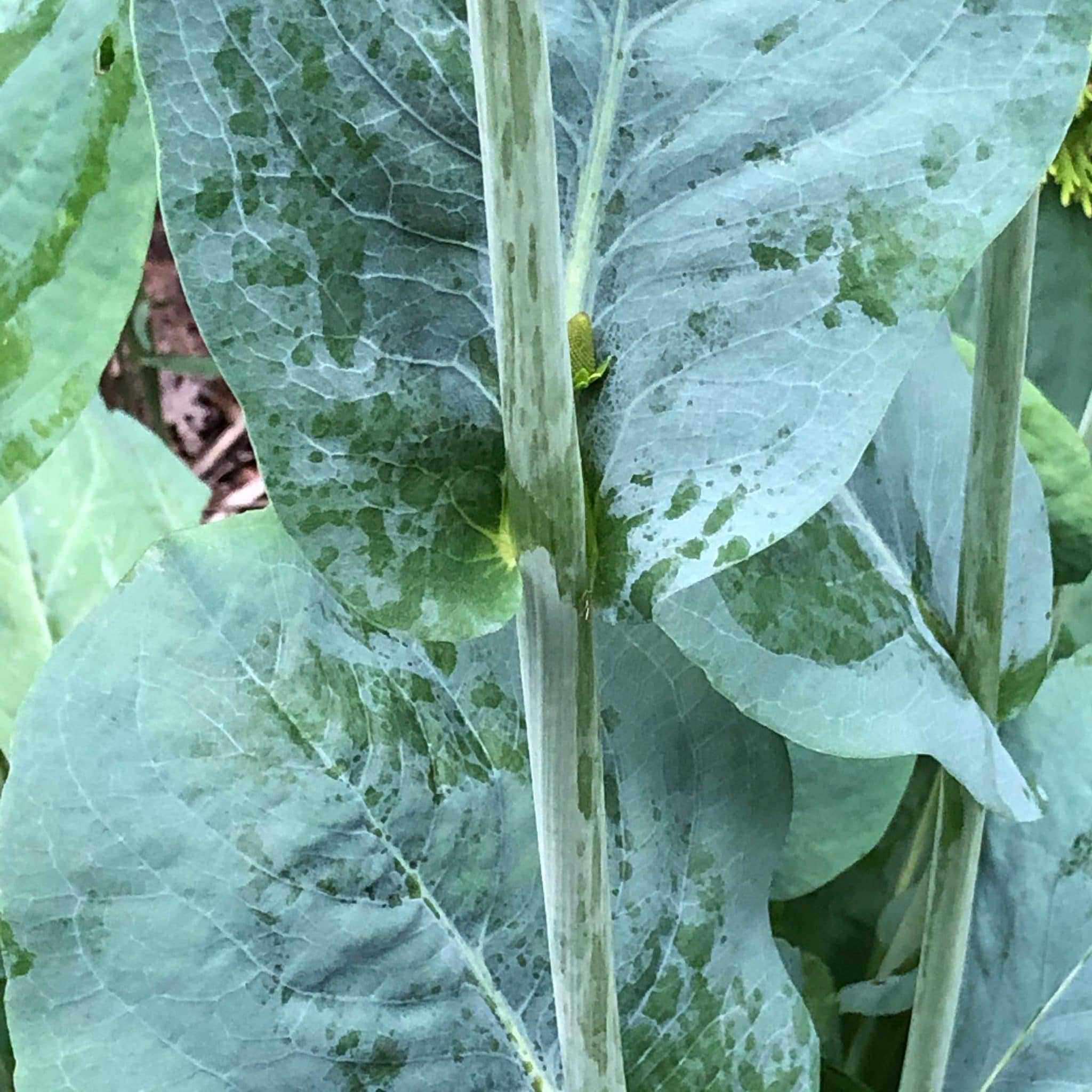Giant coneflower (Rudbeckia maxima) certainly lives up to its name. The perennial’s tall, stiff stems easily reach six or seven feet (1.8 to 2 m) and are topped with prominent brown cones circled with drooping yellow petals in midsummer. However, my favourite parts of the plant are its large, steely blue, paddle-shaped leaves clustered near the base. Some are 10 inches (25 cm) wide and 18 inches (45 cm) long, which explains the plant’s other common name: cabbage leaf coneflower.

I planted my one specimen two years ago in a bed blessed with full sun near Lemony Lace elderberry, ‘Yellow Ribbon’ cedar and ‘Blue Shadow’ fothergilla, all underplanted with lime-green and blue hostas. I love the mix of gold and blue foliage with some leaves narrow and wispy, while others are broad and flat. Not every planting scheme I come up with works out (not by a long shot!), but I’m pleased with this one.
Hardy to Zone 5, giant coneflower attracts butterflies and native bees, but not deer. In fall and winter, goldfinches relish the seedheads. When grown in full sun, plants are self-supporting despite their towering height. However, as more blooms appear, I notice the stems are beginning to lean ever so slightly. (It’s when we force tall sun lovers to grow in partial shade that the stakes and twine need to be called in.)

I’ve read giant coneflowers are drought tolerant, but prefer moist, organically rich soil, and that’s what my one plant enjoys. Some describe this native as “coarse” and although I agree it might look out of place with roses and trimmed boxwood, it’s stately and dramatic paired with ornamental grasses, baptisias, asmonias and other informal plants.
Other natives to consider
Giant coneflower is native to central and southern U.S., but not to Canada. “Optimizing Your Native Plant Options” by Lorraine Johnson lists 10 natives to Canada that are especially rewarding to grow. Her article also includes lists of other natives that do well in challenging conditions, such as dry shade, acidic soil and moisture-laden soils.
Fewer pollinators?
Are you noticing fewer pollinators in your garden? I am, and so is Toronto Gardens. According to their post, the World Wildlife Fund has reported on the more than 50% decrease in the area occupied by monarch butterflies in their wintering sites in Mexico during 2019/20.
Woody invasives of the Great Lakes
There’s a new invasive plant resource to check out if you’re in Ontario. The Woody Invasives of the Great Lakes Collaborative has launched a new website to “increase public access to high quality information about invasive shrubs, trees and woody vines in the Great Lakes region.”
Founded in 2018, the collaborative effort is coordinated by the Midwest Invasive Plant Network, a non-profit organization dedicated to reducing the impacts of all invasive plants in the midwest. In addition to a section describing Ontario regulations and regulations in states that border the Great Lakes, there are terrific fact sheets on individual invasive woody species, including Norway maple, Oriental bittersweet, Russian olive, wintercreeper and tree-of-heaven.

I have been searching high and low for giant coneflower, where can canadians find it? Fine Gardening in the US included it in an article couple years back and I have been looking, asking since. Please provide us with a contact,?